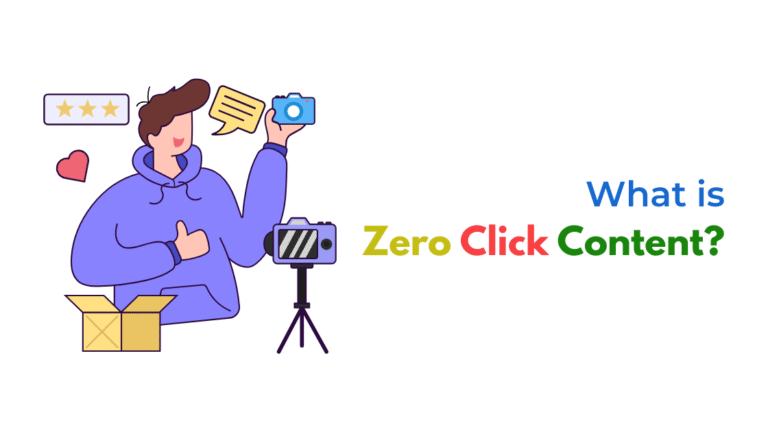If your Smart Bidding strategy is stuck in the learning phase indefinitely, it’s likely due to data instability, budget constraints, frequent changes, or low conversion volume. Fixing this means giving the algorithm consistent input and enough time to optimize effectively without interruption.

What Does “Learning” Mean in Google Smart Bidding?
When you use Smart Bidding strategies like:
- Maximize Conversions
- Target CPA (tCPA)
- Target ROAS (tROAS)
- Maximize Conversion Value
…Google’s algorithm takes a few days to adjust to your campaign’s performance data. During this time, it’s said to be in the “Learning” phase. This typically lasts 3 to 7 days after major changes.
But if your campaign stays in this phase indefinitely, it can be a sign that:
- Google’s AI isn’t getting enough data to optimize
- Or something in the campaign is changing too frequently for it to stabilize
Common Reasons the Learning Phase Gets Stuck
Let’s explore the most frequent causes in plain language.
1. Too Many Changes, Too Often
Every time you adjust:
- Budget
- Bid strategy
- Keywords
- Ad copy
- Target CPA or ROAS
…the learning phase restarts.
If you’re constantly tweaking settings, Google never gets enough time to learn. It keeps resetting the clock.
Fix:
- Avoid making large or frequent changes during the first 7–14 days
- Let the system learn for at least a week before assessing performance
2. Low Conversion Volume
Google’s bidding algorithms need at least 15 conversions in the last 30 days (ideally 30+) to work effectively.
If your campaign is only getting 1–2 conversions a week, the learning phase may never end.
Fix:
- Broaden targeting temporarily to drive more conversions
- Use a more general conversion action (like “add to cart” or “form started”)
- Lower your Target CPA/ROAS expectations until data volume improves
3. Unrealistic Bid Goals
If your Target CPA or Target ROAS is too aggressive, the algorithm can’t reach the goal, and it keeps searching.
This often happens when advertisers set:
- Target CPA far below historic CPA
- Target ROAS much higher than achievable
Fix:
- Set CPA/ROAS targets based on actual campaign averages, not ideal ones
- Use Google’s Bid Simulator Tool to estimate realistic targets
4. Limited Budget
If your budget is too low relative to your bids or goals, Smart Bidding can’t test enough variations to learn effectively.
Signs of this include:
- Low impression share
- Ad delivery limited by budget
- “Below first page bid” warnings
Fix:
- Increase budget temporarily to allow the algorithm to gather more data
- Reduce your bid goals (e.g., lower ROAS or raise CPA target)
5. Low-Quality or Inconsistent Data
Smart Bidding relies on conversion data quality. If your tracking setup:
- Is broken
- Is delayed
- Has multiple conflicting goals
…the system can’t learn properly.
Fix:
- Verify that conversion tracking is working using Google Tag Assistant
- Prioritize primary conversions and remove low-quality goals from bidding
- Avoid bidding on too many conversion types at once
6. New or Niche Campaigns
If your campaign targets:
- A very specific location
- A highly specific audience
- A niche product
…you may not get enough traffic or conversions to stabilize Smart Bidding.
Fix:
- Expand targeting or remove unnecessary restrictions
- Use broad match keywords temporarily to increase volume
- Allow longer learning time (2–3 weeks)
7. Audience or Location Fragmentation
If your campaign is split across too many small ad groups with tiny budgets or impressions, Smart Bidding doesn’t get enough data in one place.
Fix:
- Consolidate ad groups or campaigns
- Use shared budgets if running similar campaigns
8. Wrong Attribution Model
Some attribution models like Last Click give too little data to the algorithm, making it harder to optimize effectively.
Fix:
- Use Data-Driven Attribution (DDA) in your conversion settings
- DDA spreads credit across touchpoints, giving Google more learning signals
How Long Should Smart Bidding Stay in Learning?

Here’s a general timeline of what’s normal:
| Action Taken | Expected Learning Duration |
| New campaign with Smart Bidding | 7 days |
| Minor bid or ad copy change | 1–2 days |
| Budget or target changed | 3–5 days |
| Major overhaul (keywords, strategy) | Up to 14 days |
If learning extends beyond 2 weeks, something is likely misconfigured.
How to Know If You’re Truly “Stuck”
Check the status tooltip next to your bid strategy. Google sometimes shows extra information like:
- “Learning: Not enough conversions”
- “Limited: Budget too low”
- “Learning due to recent changes”
These can help you pinpoint the cause. If the tooltip gives no explanation, it often indicates multiple changes happening too frequently.
Additional Reporting Tips
- Use Campaign > Bid Strategy Type > Status column in Google Ads
- Monitor conversion volume weekly
- Cross-check impressions, CTR, and cost against prior periods
- Use Google Analytics 4 to verify actual user actions and events
How to Get Out of the Learning Phase Quickly
1. Avoid Major Changes for 2 Weeks
This is the most effective method. If possible:
- Freeze changes for 10–14 days
- Allow algorithm to stabilize
- Monitor but don’t interfere
2. Temporarily Switch to Maximize Conversions
If Target CPA or ROAS is struggling:
- Switch to Maximize Conversions or Maximize Value
- Let the system gather more data
- Switch back to tCPA or tROAS once you hit 30+ conversions/month
3. Improve Conversion Quality and Quantity
- Remove low-value goals from your conversion actions
- Focus on key outcomes like lead form submissions or purchases
- Improve UX and page speed for better conversion rates
4. Use Broad Match With Smart Bidding
Contrary to old best practices, broad match now works well with Smart Bidding. It:
- Increases traffic volume
- Gives Google more queries to learn from
- Can accelerate learning when conversions are low
Additional Resources
- Google Ads: Bid Strategy Status Meanings
- Search Engine Journal: Why Smart Bidding Fails
- Socinova: Google Ads Discussions
Final Thoughts
If your Smart Bidding strategy is stuck in learning, the root cause is usually data instability or volume insufficiency. Google’s algorithm is powerful, but it needs consistency and conversions to optimize correctly. Frequent tweaks, overly aggressive goals, or broken tracking can all delay learning indefinitely.
Need Help Optimizing Smart Bidding?
At Socinova, we’ve worked with hundreds of Google Ads accounts to stabilize Smart Bidding strategies. From structuring campaigns to improving data quality and conversion pipelines, we can help you move beyond the learning phase and into meaningful results.
👉 Book a Call today—let’s stop the cycle of Smart Bidding confusion.




